Spanish Thyme, known locally as Big Thyme, is a soft-stem perennial herb used to season many Caribbean and East Indian cuisine and is valued for its medicinal benefits.
Its scientific name is Plectranthus Aboinicus. It is a member of the mint family, with a flavor similar to Oregano.
Since I remember, we’ve always had Spanish Thyme growing in my yard but never paid much attention to it.
However, after a visiting herbalist excitedly related his experience using the herb in his practice, I decided to research. I was amazed by the usefulness of the plant.
This article will look at Spanish Thyme, its uses, benefits, and even how to grow this helpful plant.
1. What Does Spanish Thyme Look Like?
Spanish Thyme has large, bright green, fleshy leaves measuring up to 3 inches if grown in ideal conditions. The edges of the leaves are sawtooth but gentle to the touch, similar to the smaller Panadol Bush.
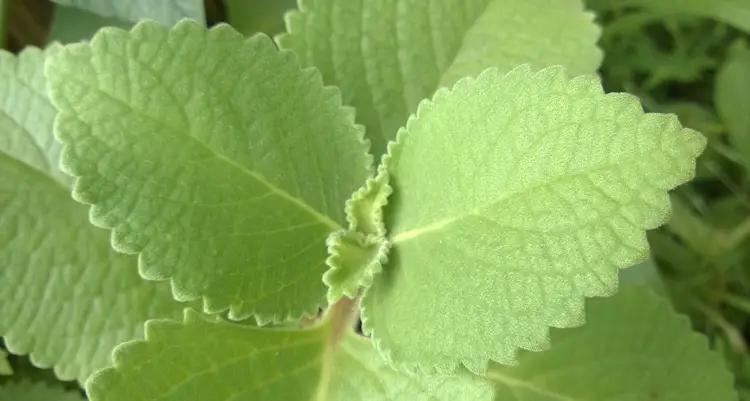
Spanish Thyme has a succulent stem with a slightly lighter color than the leaves. It is soft to the touch and very fragile.
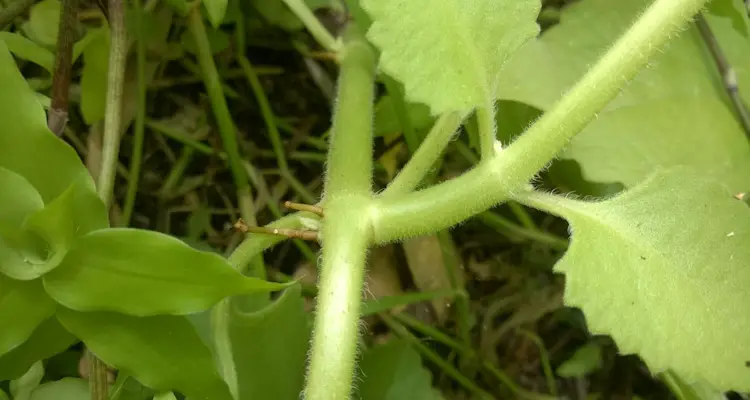
The surface of both the leaves and stems are usually covered in fine, soft hairlike prickles. It is also common to see small roots nodes on the branch of mature plants, where they intersect with the leaves.
2. What Are Some Other Names For Spanish Thyme?
Spanish Thyme (Plectranthus Aboinicus) is native to many countries in the East and South of Africa. However, it grows worldwide and is well known for its culinary and medicinal benefits.
Here is a list of some alternative names for Spanish Thyme and the countries in which they are used.
| Name | Countries |
| Spanish Thyme | Trinidad |
| Mexican Mint | USA |
| Cuban Oregano | Common Name |
| Caribbean Oregano | Common Name |
| Orégano Francés, French Thyme | Cuba and some Spanish Speaking Countries |
| Country Borage | USA |
| Indian Borage | USA |
| Pudina | Trinidad and Tobago, Guyana |
| Big Thyme | Grenada |
| Broad Leaf Thyme | Common Name |
| Soup Mint | South Africa |
| Thick Leaf Thyme | Common Name |
| Pashan Bhedi, Muriyan Pacha | India |
| Karpooravalli, Patharchur, Parnayavani | India |
| Murikooti, Patta Ajwayin (Hindi Name) | India |
There are many alternatives to the name in India, suggesting that the plant might also be native to that region.
3. Difference Between Spanish Thyme And Jamaican Oregano
I was surprised to learn that the name “Spanish Thyme” is not unique to the Plectranthus Aboinicus plant.
This was brought to my attention by a friend from Trinidad who referred to my Jamaican Oregano plant, Lippia Micromera, as Spanish Thyme.
While both are often used as substitutes for Oregano in Caribbean cuisine, they look entirely different, as shown in the photo below.
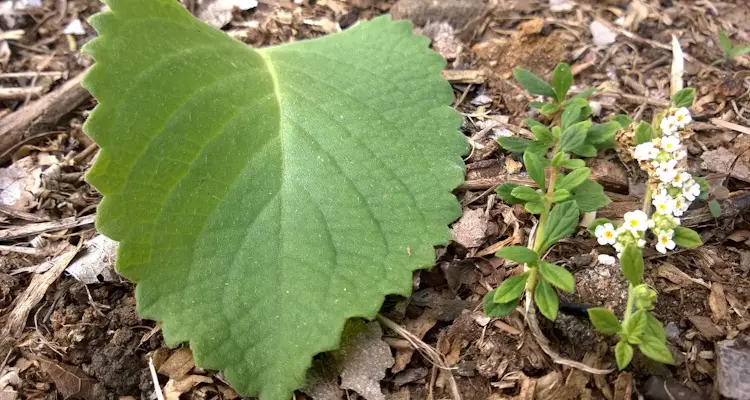
As you can see, Jamaican Oregano has much smaller leaves, with woody stems, unlike the succulent nature of the Broad Leaf Thyme.
At first, I thought he was just mistaken. I later realized that Lippia Micromera shares many common names with Plectranthus Aboinicus, depending on the country you visit.
4. What Are The Benefits Of Spanish Thyme?
Plectranthus Aboinicus is one of the most studied members of the mint family, and its benefits are well documented.
Spanish Thyme has medicinal and nutritional benefits. It is high in Vitamin C, Vitamin A, and substances that help to improve digestion, vision, respiratory illnesses, and general immune health. It also contains compounds rich in Omega-6 fatty acids and assists in treating arthritis.
Traditionally, Spanish Thyme, known by its Hindi name Patta Ajwayin, has been used extensively in Ayurvedic practices and many home remedies.
For example, the juice from the leaves is often combined with either honey or ginger and consumed to relieve symptoms associated with asthma, fever, and indigestion. It can also be mixed with coconut oil and applied topically to insect bites.
While it has no known severe side effects, many people experience mild irritation. As a result, please seek advice or supervision if you intend to use It for medicinal purposes.
5. How To Use Spanish Thyme
Spanish Thyme is edible, albeit a bit bitter, and is used in various dishes worldwide. It is revered for its medical applications and gained popularity as research confirms its potential health benefits.
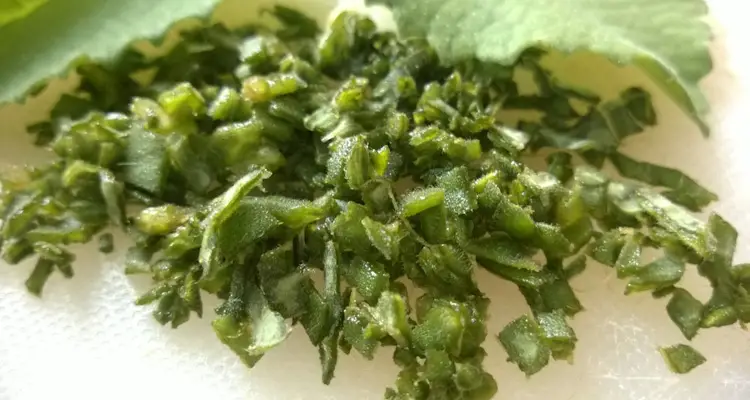
Culinary
Flavoring – The leaves of the Spanish Thyme plant can be chopped up and used sparingly in salads or added to butter as a flavoring.
Seasoning – Spanish Thyme is often described as having a robust Oregano-like flavor. It is used as a substitute in recipes. When mixed with other herbs, it creates a tasty green seasoning for fish, chicks, and other meats.
Teas – Spanish Thyme tea is consumed daily in some countries but is an acquired taste. In some instances, you may feel a bit upset after taking the first sip, but it works wonders in relieving mild congestion.
Medicinal Uses Of Spanish Thyme
As mentioned before, Plectranthus Aboinicus is one of the most researched members of the mint family.
Traditionally, Spanish Thyme treated colds, fevers, indigestion, and arthritis. Most of these claims are supported by scientific research, confirming the presence of various compounds proven to assist in relieving these ailments.
However, I must note that these studies were done mainly using extracts and not the plant itself.
There are ongoing studies on using these compounds to treat cancer and other illnesses.
While it is possible to get similar benefits from the fresh plant, it is always advised to seek medical advice from your physician before using such remedies.
6. How To make Spanish Thyme Tea
Spanish Thyme tea is easier to make than it is to consume.
The steps are as follows:
- Boil water and pour it into a cup.
- Add two to three Spanish thyme leaves.
- Cover cup for 5 minutes, then drink.
You can allow it to steep for 10 minutes for a stronger tea. Optionally, you can add some honey to your taste.
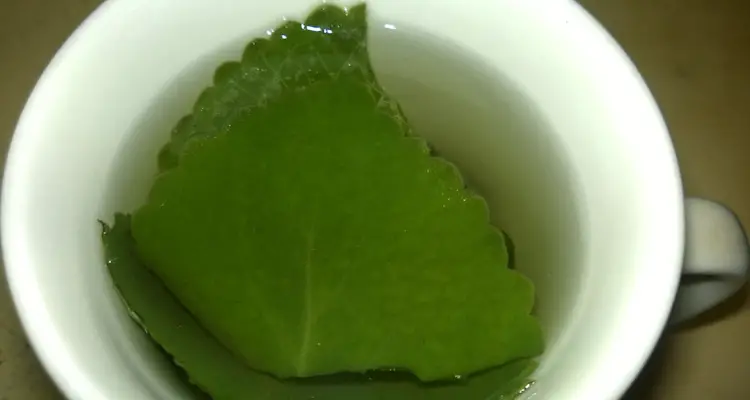
Instead of drinking, you can also inhale the herb-infused steam as a form of steam therapy to relieve nasal congestion.
7. How To Grow Spanish Thyme
You can grow Spanish Thyme from seeds or cuttings. It requires moist soil and prefers partly shaded areas. It is easy to grow both in-ground and in containers but ensures enough space to spread.
To grow Spanish Thyme from seed, sprinkle some seeds in a cool, moist area and water them in. Depending on the temperature, they should germinate within 3 weeks.
However, ideally, you should get some cuttings from a friend or market. You can plant it into a pot or directly in a shaded part of the garden. Water it until you start to see new growth.
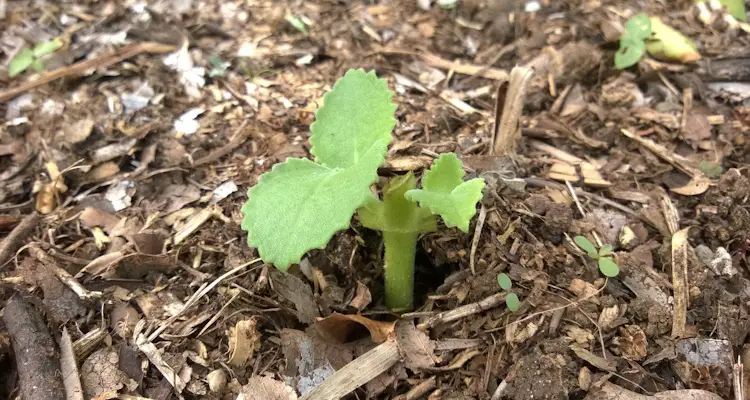
Some people prefer to place the stem in water. While this also works, it is unnecessary since Spanish Thyme will grow almost anywhere it comes into contact with the soil. Due to this tendency, we now have it growing throughout the entire property.
8. Where To Buy Spanish Thyme?
In most countries, you can purchase fresh Spanish Thyme directly from farmers at farmer’s markets and supermarkets.
The fresh leaves are tender and easily discolored. As a result, extra care must be taken to ship over long distances.
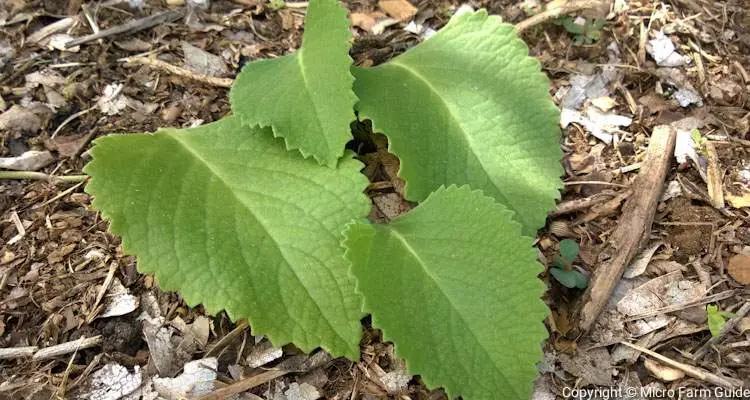
However, you can order plants, dried leaves, and seeds online.
Ideally, you can purchase Spanish Thyme once and keep it growing for the rest of your life.
Final Thoughts
Spanish Thyme is a popular seasoning used in dishes worldwide and is well known for its medicinal benefits.
While not a true oregano, it shares a similar flavor and aroma.
It is easy to grow in the soil and containers and somewhat resilient to temperature changes. As a result, it should be a part of all herb gardens.
Related Questions
Is Spanish Thyme Oregon?
Spanish Thyme tastes similar to but is not a true Oregano. However, due to the similar flavor profiles, it is often used as a substitute. It has even gained several nicknames for that effect.
How To Preserve Broad Leaf Thyme
The most common way to preserve Broadleaf Thyme is by drying. However, it is possible to maintain its flavor by immersing in cooking oil to extract or freezing the mixture in cubes to maintain freshness.
Does Spanish Thyme Repel Mosquitoes?
Spanish Thyme reportedly contains compounds that can repel mosquitoes. However, rubbing fresh Spanish Thyme directly onto your skin or clothing has proven ineffective at repelling mosquitoes, contrary to many claims.
How To Dry Spanish Thyme
You can dry Spanish Thyme leaves using either an oven, food dehydrator, or air dry in the sun. However, due to their succulent nature, they require a bit more time to dry. In the case of sun drying, you also have to ensure a constant flow of air to avoid spoilage.
References
Planet Ayurveda. What Are The Uses And Benefits Of Indian Borage? planetayurveda.com. Acceded February 2022
IOP Science. The Benefits of Ethanolic Extract of Plectranthus amboinicus…with Rhodamine-B. [PDF] Accessed February 2022
Gary Allen. The Herbalist In The Kitchen. books.google.com. Accessed February 2022
Tropicos. Plectranthus Aboinicus. legacy.tropicos.org. Accessed February 2022
